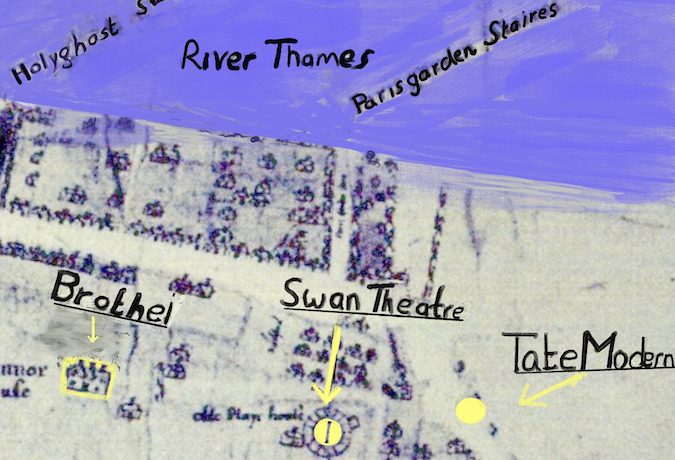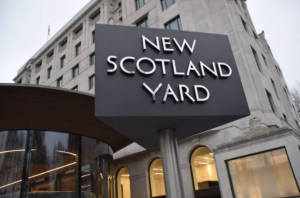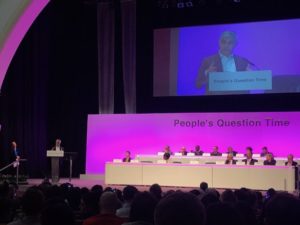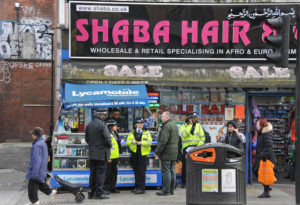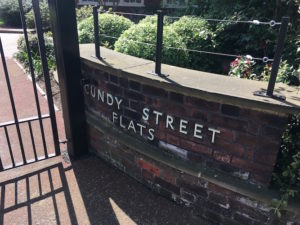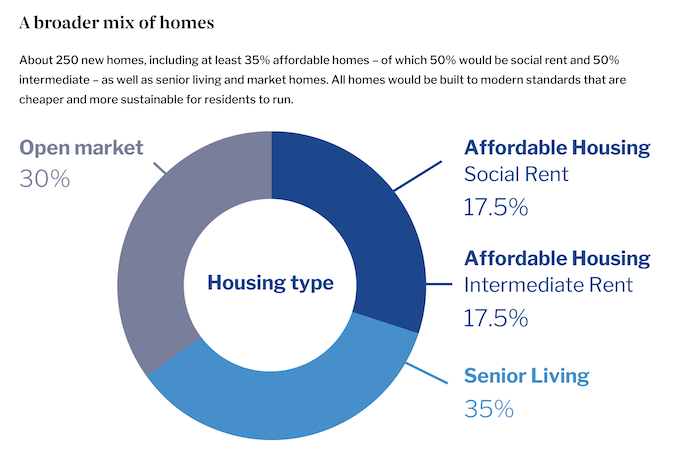Yesterday (23 January 2020) was an electoral “Super Thursday” in the London Borough of Brent. Three wards (out of the borough’s 21) had by-elections, with the electors of one of them having the opportunity to fill two vacancies that had opened up on Brent Council.
These were the first London council by-elections since December’s general election and another pretty depressing experience for the Labour Party, with swings against it ranging from 12 to 25 per cent and the loss of a seat to the Liberal Democrats.
Brent’s electoral map from 2018 gives a misleading impression of uniformity. There is a solid wall of 20 red wards with a blue outpost in Kenton, creating a council composition of 60 Labour councillors and three Conservatives. But the borough is a complex social and political environment. It is hyper-diverse in a way that few other places, even in London, are. Its patchwork, evolving ethnic composition and its quarrelsome politics are reminiscent of New York’s.
Politics in Brent ranges from the acutely parochial to the broadly global. The borough covers a slab of the capital stretching from the threshold of Central London at Kilburn to some spacious suburbia on the south side of Harrow Hill. Although there are factors common to the three wards where people went to the polls yesterday – they are all in Wembley and in the Brent North parliamentary constituency, and all have BAME majorities – there are also important differences.
Barnhill, the ward where two seats were up for grabs, is a suburban ward in north Wembley, lying north east of the Metropolitan Line around the stations of Preston Road and Wembley Park. It was developed mostly in the inter-war years as a desirable residential area for people commuting into Central London or to Harrow – a prime slice of Metroland that mostly consists of avenues of pleasant 1930s semis. Andrew Teale has written an engaging and informative essay on the history of Wembley and the origins of the by-elections there.
The exception to Barnhill’s general suburban comfort is the Chalkhill area, which had a troubled late 1960s concrete estate of the same name built near the former Brent (and Wembley) Town Hall in Forty Lane. The estate was redeveloped into a new form in the 2000s, and although the place still has its share of problems, it is much the better for it.
The estate’s presence means that Barnhill has 26 per cent social tenants, which is rather high for suburbia. Politically, it used to be rock-solid Conservative in local elections (it voted 74 per cent Tory in 1994 and 54 per cent even in 2002) but flipped decisively to Labour in 2010. Part of the reason is its steady shift in ethnic composition. At the time of the 2011 census it was only 19 per cent white British or Irish, with the largest single ethnicity being Indian (22 per cent), and substantial numbers of black (16 per cent), other Asian and “white other” (mostly mainland European).
The two Labour councillors who resigned in Barnhill were Sarah Marquis and Michael Pavey, who had both served in senior roles in the council administration and were stepping down for family and life-balance reasons. The double vacancy was defended by Mansoor Akram and Gaynor Lloyd. Akram is the brother-in-law of council leader Mohammed Butt and Lloyd is married to a current Labour councillor, so the family-friendly nature of Brent council politics continues.
The Conservative team of Kanta Mistry and Stefan Voloseniuc offered the stiffest electoral competition in this ward contest, but the record of the Labour council was also strongly criticised by the two Greens who entered the fray. One of them, Martin Francis, writes a local blog called Wembley Matters. The Barnhill result saw a huge swing (17 per cent) from Labour to the Conservatives, with the majority of the less popular of the two winning candidate dropping from 1,453 votes to a mere 70. Turnout was a very poor 22 per cent, down from 34 per cent in May 2018.
Moving south within Brent, Wembley Central councillor Luke Patterson stood down in December, telling the Kilburn Times that, “I have recently been given increased responsibility in my career in education and due to the birth of my third child, time has become a major factor in my decision. Out of duty to the people of Wembley Central I feel it is only fair on them if I stand down.”
Councillors often find that John Lennon had a point when he sang that, “Life is what happens to you while you’re busy making other plans”. There do seem to be problems with the demands that councillors’ workloads impose, particularly on younger people and families, and with the ability of the existing system to accommodate public service with a balanced life. To have three such resignations within weeks does suggest that Brent in particular could do more to help and also, perhaps, that political life can be bleak and frustrating, even with the cushion of a massive majority.
Wembley Central ward is tightly drawn around the eponymous station, and its electoral history is Labour with a Lib Dem interlude in 2002-10. It is an older suburb than Barnhill and less green and spacious. While Barnhill is hyper-diverse, Wembley Central is preponderantly Asian-British, particularly Indian (48 per cent). Sonia Shah, Patterson’s successor as Labour candidate, held the seat in the by-election but in the face of another double-digit swing to the Conservative candidate Sai Karthik Madabhusi and a big fall in turnout (from 42 per cent in 2018 to 28 per cent in 2020).
Just south of Wembley Central one finds Alperton ward, the scene of the strangest and most interesting of the Brent by-elections. It is a residential area lying mostly to the east of Alperton Piccadilly Line station, backing onto the Park Royal industrial area across the borough border in Ealing. Like the other Wembley wards, it is mainly inter-war suburban and majority-minority, with its Indian-origin population being 44 per cent at the time of the 2011 census: it and Wembley Central are near the top of the charts for the Hindu percentage of the population.
Alperton has a higher proportion of owner-occupiers than the more obviously outer suburban Barnhill. It is a relatively insular community, within which – unlike in most of London, where neighbours come from different places and ethnicities – it is possible to live without speaking much English. In theory, its housing stock and accessibility by Tube should make Alperton prime territory for gentrification, but there are no signs of this happening. The sky, as in Wembley Central, is often lit by a weird orange glow of light pollution from Wembley Stadium.
Alperton is a bit geographically isolated within the borough and from 1990 to 2010 was a Liberal Democrat stronghold – the two facts go together, as wards at the edge of a borough are perhaps most susceptible to pavement politics and dislike of the Town Hall (see also Southfield in Ealing, Fortune Green in Camden, West Barnes in Merton…). But Labour won a seat in 2010, picked up another when councillor James Allie switched from Lib Dem to Labour in 2012, and gained the third in 2014.
The by-election came as a result of Allie’s resignation under a cloud. He was found in a High Court case to have used his position as executor of an estate to obtain money from the legacy for personal use rather than passing it to the intended beneficiary, the Canon Collins Educational and Legal Assistance Trust. He was dismissed by his employers and his conduct is being further examined by the relevant authorities.
Brent Labour did not do very well at cleaning up their act after this embarrassment. The replacement candidate, Chetan Harpale, was suspended from the party mid-campaign when Islamophobic (and anti-Labour) utterances on Twitter came to light – another basic failure of candidate quality control. Nevertheless, he still seemed to be getting help from some Labour activists through to polling day.
Hoping to revive the local political tradition, the Liberal Democrat candidate Anton Georgiou (pictured above) campaigned vigorously and helpers from outside Brent lent their support. The circumstances of the election, Labour’s general demoralisation, the candidate trouble, the tight-knit nature of the Alperton local community and the borough-wide politics of Brent made it fertile territory. Georgiou pulled off an impressive victory, beating Harpale by 395 votes and achieving a swing from Labour in excess of 25 per cent. Turnout fell from a very high 46 per cent in 2018 to a still respectable 34 per cent.
Taken together, the results in the three wards indicate both local and national Labour malaise.
Having a massive majority, perhaps particularly one that has been stitched together by forming a consensus between Brent’s myriad parts and its contending political and personal factions, can sometimes induce stagnation and complacency. Campaigners in the by-elections found that there was a ready audience for criticism of the standards of Brent’s basic services – old fashioned local politics issues like rubbish collection and street sweeping worked against the Labour candidates. So too did the developing pattern of politics among British Hindu voters – the swings to Zac Goldsmith against the tide in 2016, and the close relations between some Conservatives and the Hindu nationalist politics of Modi in India have had an impact, with Labour stereotyped as a Muslim party.
On a national level, parties often struggle to motivate their activists and voters in the months just after a general election defeat and this may have been a factor in Brent. While introspection may be necessary, it does not inspire support in the short term. Having given up his leadership ambitions, Brent North MP Barry Gardiner now has more time to study the lessons of the big anti-Labour swings on his own doorstep.
OnLondon.co.uk is committed to providing fair and thorough coverage of the capital’s politics, development and culture. The site is small but influential and it depends on donations from readers. Individual sums or regular monthly contributions are very welcome indeed. Click here to donate via PayPal or contact davehillonlondon@gmail.com. Thank you.



